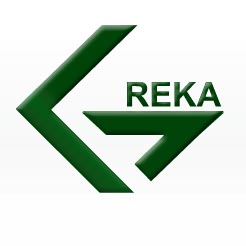U.S. EPA Holds Greka Responsible for Cleanup of Toxic PCBs
Oil Company Begins Area Assessment Under EPA's Direction
An agreement effective June 16, 2008 between the U.S. Environmental Protection Agency and Greka Oil and Gas holds Greka responsible for the removal of toxic polychlorinated biphenyls (PCBs) from their site and the nearby creek. EPA expects that the PCBs were released in January 2008 when a power pole and three transformers, which contained PCB-contaminated oil, collapsed during a rainstorm.
After immediate responses to the oil spill, EPA tested water and sediment samples from Greka’s site and the adjoining creek and found inadmissibly high levels of PCBs. The agreement that EPA and Greka Oil and Gas have entered into is intended to ensure a thorough and timely cleanup by stipulating a timeline of “compliance milestones” and mandatory progress reports by Greka to EPA. Noncompliance with the dates that EPA has directed will result in fines ranging from $1000-$7500 per day. EPA spokesperson Mary Simms emphasized that the agreement is not about the money; the main concern is to ensure that the issue is dealt with and cleaned up by Greka. EPA’s measures aim to remedy the situation on the company’s site and neighboring creek in order to protect public health and welfare, and the environment.

“The EPA is focused on ensuring an effective clean-up remedy for the site because PCBs are a highly toxic substance,” Chief of the Response, Planning and Assessment Branch for the Superfund Division in the EPA’s Pacific Southwest region, Daniel Meer said in a written statement. “Greka is responsible for the PCB cleanup, and the EPA will closely monitor their performance.”
Greka has begun an assessment of their Bradley 3 Island facility to determine the exact extent of the issue and the best way to proceed in removing toxins. Greka spokesperson Robert Emmers said that Greka shares EPA’s goal of getting it done as soon as possible and found their mutual discussion and agreement to be productive. After the assessment whatever the environmental issue is determined to be, Greka will make sure it is cleaned up, said Emmers.
In EPA’s February pollution report, it is noted that the oily rainwater from the fallen power pole was uncontained and spilling over into a creek which is habitat and breeding ground for the federally-listed endangered California Tiger Salamander. The endangered species are under the jurisdiction of the U.S Fish and Wildlife Service.
EPA is concerned about the PCB contamination because PCBs are likely carcinogens which take decades to slowly degrade. They are dangerous when ingested by people or animals because even at low exposure levels the concentration of PCBs stored in the fatty tissue are slowly released into the blood stream and can gather to a higher level. Immediate and short term health risks associated with exposure to PCBs include irritation of the eyes, nose, throat, and skin. More extreme cases of high level, acute exposure can cause damage to the liver and may even be fatal.



